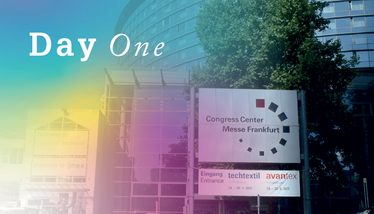Welcome to Achema 2024!
A quick guide to day 1 at the show
| 3 min read

Get ready for a busy week! This year’s Achema show in Frankfurt, Germany will feature 2,700 exhibitors, as well as over 900 lectures and panel discussions. There’s also plenty of side events to look forward to, including the International Powder and Nanotechnology Forum, Flow Chemistry Symposium, AIRA Robotics Challenge, Career Day, and much more.
For this year’s event, the organizers have selected six key topics: digital, green, lab, pharma, process, and hydrogen. According to the Achema program, “These themes shape the future of the process industries by driving innovation towards sustainability, efficiency, and flexibility. They encourage the industry to adopt new technologies and approaches that reduce environmental impact, optimize resource use, and enhance product quality and safety.”
We’ve included some suggestions on what to do on day 1 below. With cell and gene being such a key focus in the pharma industry right now, it’s interesting to see a number of Achema sessions dedicated to this topic.
Today's Must-See
AIRA Robotics Challenge (Hall 11.1, Stand A5)
If you’re interested in robots, this challenge is worth checking out! Teams will be demonstrating how robots can perform tasks in mock plant and lab scenarios, with a focus on systems that enable remote control.
10:30 - 11:00 (Facette - 3 via) - Designing Tomorrow’s ATMP Facility: How to Leverage Emerging Technologies
How do you right-size your operations? Niranjan Kulkarni and Nicolas Bahler from CRB share their tips and offer two case studies for consideration.
13:00 - 14:00 (Europea 4.0) - Next generation pharma manufacturing - current advances in cell and gene therapy
Achema organizers invite attendees to this session to “meet leading experts from academic and industrial research who share their insights into all stages of the development and production of cell and gene therapies.”
14:30 - 15:00 (Facette - 3 via) - Advancing Cell and Gene Therapy Manufacturing with integrated manufacturing platforms
Hear from Miltenyi Biotec’s Silvio Weber on the challenges presented by cell and gene therapies, and how integrated manufacturing can be implemented.
15:00 - 15:30 (Granat 11.0) - Digital Trends in Manufacturing Science and Technology (MSAT)
How digital trends are reshaping process development, technology transfers and the daily work of manufacturing science and technology experts.
Tomorrow's Planner
Starting tomorrow and running into Wednesday is the International Powder and Nanotechnology Forum, taking place in Hall 4.C (Room Alliance). On Tuesday, there will be sessions on nanotechnology and simulation, while Wednesday will include presentations on pharmaceutical process engineering and materials, and drug delivery systems with nanotechnology.
Aprés-Sci
Here’s a short history lesson on the venue for Achema. At the time of its opening in 1909 by Kaiser Wilhelm II, Festhalle was the largest dome in Europe. It hosted various leisure, sporting, and business events until the outbreak of World War I, when it was promptly taken over by the military to be used as a barracks. After the war, it became a venue once again until the 1930s.
The Nazi Party made frequent use of Festhalle for propaganda rallies, and 1938 saw the venue put to darker use still when hundreds of Frankfurt’s Jewish citizens were herded into the venue during Kristallnacht. It was from here that the first mass transports to concentration camps began. A plaque inside Festhalle’s rotunda stands to remind visitors of this sad fact. After World War II broke out, Festhalle was claimed by the military again, but this time only to store uniforms and ammunition. A fire struck the building in 1940, and later on Allied bombing worsened the damage, reducing Festhalle to nothing but walls and an iron structure.
After the war there was debate over whether to rebuild or bulldoze Festhalle, but thanks to the efforts of the citizens and town mayor, “rebuild” won out.
Thought of the Day
“With potentially thousands of genetic diseases treatable by gene therapies, the possibilities are nothing short of staggering and we can expect to see a need for higher manufacturing capacity and volumes in the future.”
George Buchman from Catalent writing for The Medicine Maker on the need for process innovation in gene therapies.



















